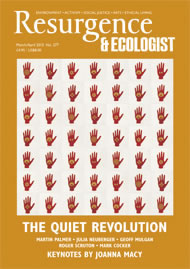Rarely has there been such a creative, mutually supportive and inspiring relationship between a poet and a literary critic, although it is significant that Keith Sagar is also a poet and a storywriter. The letters tell of the growing relationship between Ted Hughes and Sagar, and the importance of this relationship to both men.
Sagar wrote the seminal study of Hughes – The Art of Ted Hughes, published in 1975. If someone could choose to read only one book on Hughes, this is the one I would highly recommend.
In the first letter to Sagar it is clear that Hughes has trust and respect for him at such an early stage. He comments on an article Sagar sent on Hughes’s work: “It is a great change to read an article that concerns itself with the imaginative and vital interior of poetry, rather than the verbal surface exclusively.” It feels at this point that a seed has been sown, as Hughes realises Sagar is a critic who believes as passionately about poetry as he does.
Throughout the letters, the reader gains a valuable insight into Hughes’s character, his generosity, his great capacity for friendship, and his wide and deep reading of Shakespeare, contemporary poetry, mythology and spirituality. As would be expected, he writes with great sensitivity and perception about Sylvia Plath. In May 1981 he writes: “So you see I read those Ariel poems as a climb, not a fall. A climb to a precarious foothold, as it turned out.”
In a late letter in 1998, Hughes writes: “Your account of the co-operation between SP and me is pretty much as I see it.” What greater tribute could there be to Sagar’s intuitive and great understanding of Hughes?
One of the most remarkable aspects of this book is that Sagar challenges Hughes with honesty; and how these challenges are met is testament to their solid friendship and mutual respect. On one occasion Sagar questions Hughes’s decision to omit some poems from Cave Birds. Hughes wrote back: “I’d like to thank you for your remarks about Cave Birds, because they made me dig out those pieces I’d deleted, and so it comes about that I rediscover their rough virtues.”
In addition to the letters there are some marvellous photographs in this book, some of them never previously published. In particular there is a lovely photo of Hughes and Leonard Baskin (the main artist who illustrated his work) in the last year of Hughes’s life.
The photograph of Hughes on the cover is carefully chosen to show him off guard, smiling, warm, in contrast with more famous photos, and Sagar on the back cover looks more like a roamer over landscapes than a literary critic.
The memorable moments in the letters include Hughes describing his seminal fox dream at Cambridge and later ruefully reflecting on his writing prose at the expense of his poetic muse, “burning the foxes”. What is so precious is to hear Hughes’s voice, his naked, humane, generous, healing voice.







